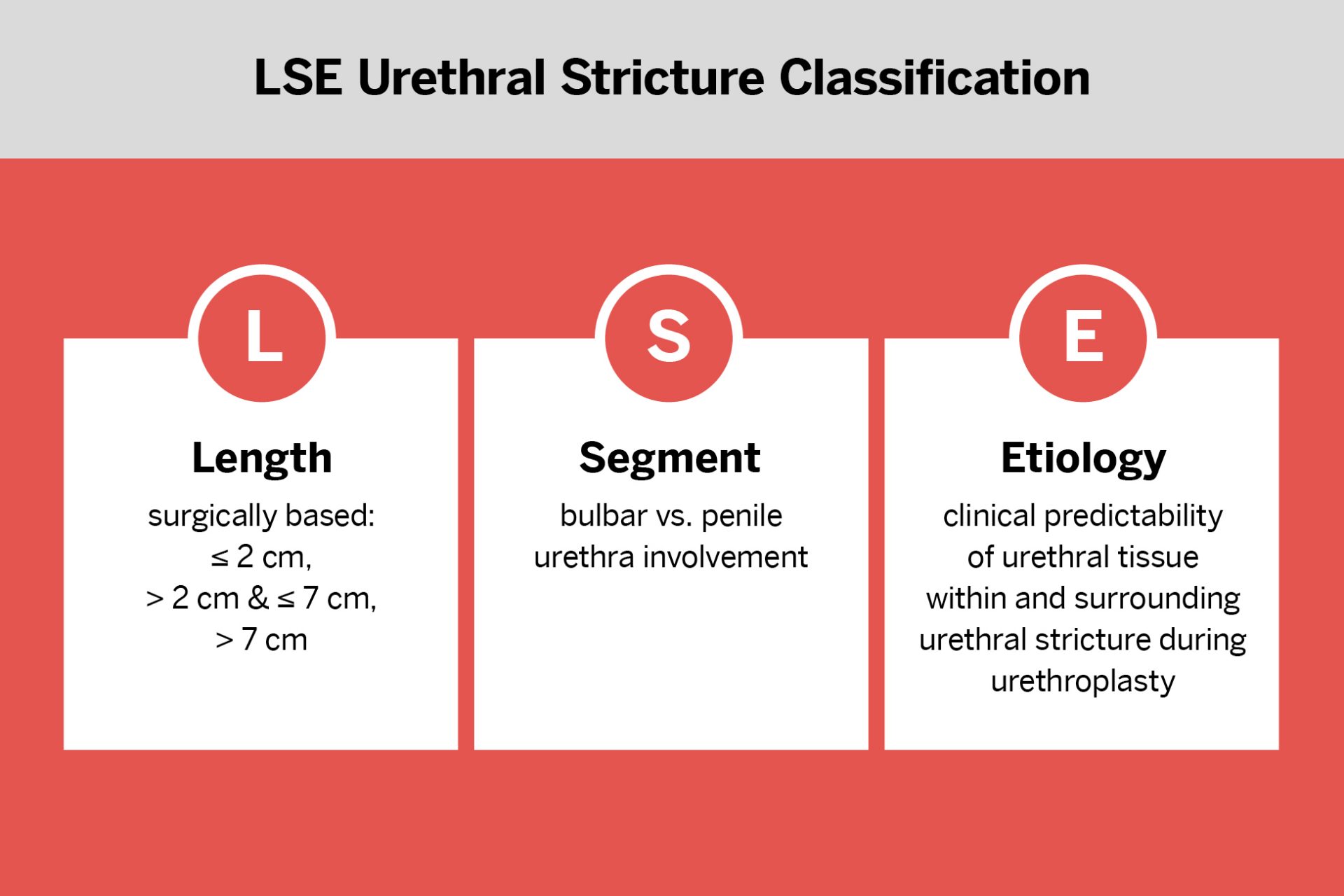Urethral stricture disease (USD) is a heterogeneous condition with poorly understood pathophysiology. The lack of a classification system for USD has slowed progress in research across institutions to advance new treatments.
“Reconstructive urologists needed a system to allow us to do the same for urethral strictures.”
Lee C. Zhao, MD
“Oncologists can use the TNM system to classify disease and compare treatments. We reconstructive urologists needed a system to allow us to do the same for urethral strictures,” says Lee C. Zhao, MD, a specialist in surgery for urethral strictures.
The new LSE urethral stricture classification system was recently created by the Trauma and Urologic Reconstruction Network of Surgeons (TURNS), of which Dr. Zhao is a participant. The system incorporates three elements (length, urethral segment, and etiology), includes clinically relevant subcategories, and is based on readily available clinical data.
In developing the LSE classification system, importance was placed on ensuring high interrater reliability, or a high likelihood that different clinical observers would classify an individual case of USD the same way.
Using the LSE classification, review of 2,162 strictures revealed the system to be strongly associated with urethroplasty type and etiology. Dr. Zhao, an author of the LSE classification system, expects it to be widely utilized among urologists to discuss the treatment of urethral strictures.






